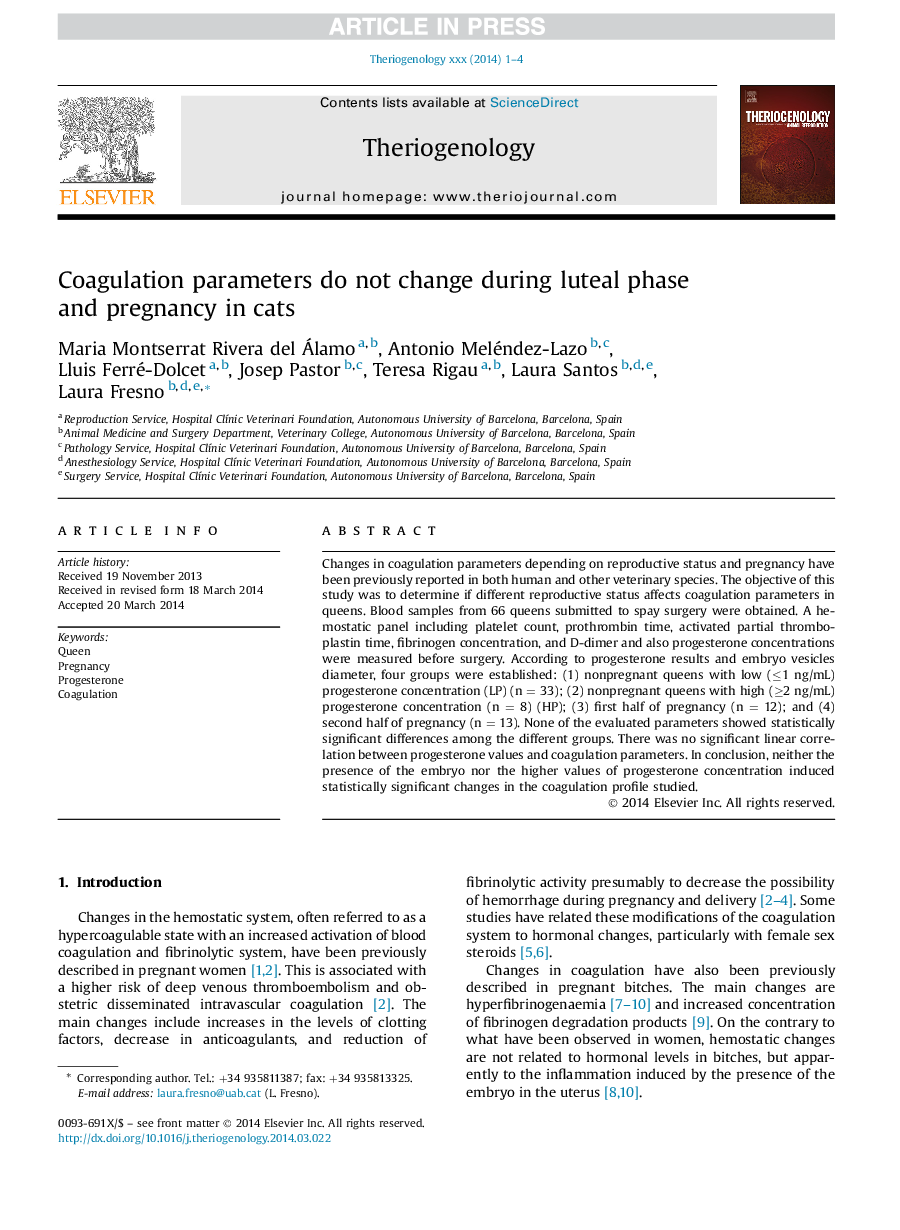| Article ID | Journal | Published Year | Pages | File Type |
|---|---|---|---|---|
| 10891942 | Theriogenology | 2014 | 4 Pages |
Abstract
Changes in coagulation parameters depending on reproductive status and pregnancy have been previously reported in both human and other veterinary species. The objective of this study was to determine if different reproductive status affects coagulation parameters in queens. Blood samples from 66 queens submitted to spay surgery were obtained. A hemostatic panel including platelet count, prothrombin time, activated partial thromboplastin time, fibrinogen concentration, and D-dimer and also progesterone concentrations were measured before surgery. According to progesterone results and embryo vesicles diameter, four groups were established: (1) nonpregnant queens with low (â¤1 ng/mL) progesterone concentration (LP) (n = 33); (2) nonpregnant queens with high (â¥2 ng/mL) progesterone concentration (n = 8) (HP); (3) first half of pregnancy (n = 12); and (4) second half of pregnancy (n = 13). None of the evaluated parameters showed statistically significant differences among the different groups. There was no significant linear correlation between progesterone values and coagulation parameters. In conclusion, neither the presence of the embryo nor the higher values of progesterone concentration induced statistically significant changes in the coagulation profile studied.
Related Topics
Life Sciences
Agricultural and Biological Sciences
Animal Science and Zoology
Authors
Maria Montserrat Rivera del Álamo, Antonio Meléndez-Lazo, Lluis Ferré-Dolcet, Josep Pastor, Teresa Rigau, Laura Santos, Laura Fresno,
